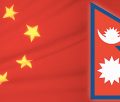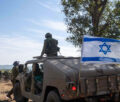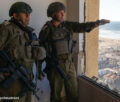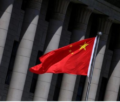In response to the Threat of China, the five major services of the United States have strengthened the Indo-Pacific deterrent posture
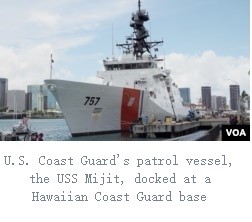

As China conducts live-fire exercises around Taiwan, analysts suggest that the United States must vigorously increase its deterrent in the Indo-Pacific region to avoid a future war with China. In fact, responding to China’s “step-by-step threat” with a sense of urgency has become the consensus of the US military and all walks of life. Prior to Pelosi’s visit to Taiwan, five major services, including the U.S. Navy, Army, Air Force, Marine Corps, and Coast Guard, had begun further deployments to deterrence postures in the Indo-Pacific region.
In the face of China’s “island closure” operation against Taiwan, the U.S. Department of Defense ordered the USS Ronald Reagan CVN-76 aircraft carrier strike group operating in the Philippine Sea in the western Pacific Ocean (including southeastern Taiwan) to remain in the waters surrounding Taiwan to monitor developments. On August 5, the Reagan carrier strike group, which had reached the waters adjacent to Japan, began to turn back and march toward the South China Sea.
USS Reagan is the U.S. Navy’s only forward-deployed aircraft carrier, homeported at Yokosuka Naval Base in Japan, under the Seventh Fleet. For more than 70 years, the Seventh Fleet has maintained a forward presence in the Indo-Pacific region, forming the first line of defense for the U.S. military along with the “First Island Chain” (a chain of island belts stretching from the Japanese Islands and the Ryukyu Islands to Taiwan in the north to the Philippines and the Sunda Islands in the south). In 1996, when the third Taiwan Strait crisis occurred, it was the Seventh Fleet that arrived in time to end the crisis.
However, in addition to the Seventh Fleet, which is stationed in the Western Pacific, the Navy’s Third Fleet recently said that it will also expand its activities in the “Indo-Pacific region”. The Jurisdiction of the Third Fleet covers an area of approximately 50 million square kilometers (including the Bering Sea, Alaska, the Aleutian Islands, and parts of the Arctic) in the eastern and northern Pacific Oceans. The Third Fleet has just finished hosting the 2022 Rim of the Pacific Exercise, in which 26 countries, including the United States, participated. In fact, since the US military proposed the “Third Fleet Forward” strategy in 2015, in the western Pacific, the US military has gradually formed a trend of dual fleet deployment. The Third Fleet and the Seventh Fleet complement each other.
Vice Admiral Michael Boyle, commander of the U.S. Navy’s Third Fleet, said in a recent interview with the USNI News that as the Military in the Indo-Pacific region changes, the U.S. Navy’s Third Fleet is playing and expanding its role — either as a mobile unit of the Pacific Fleet or as a forward mission while the Seventh Fleet is busy with other tasks.
Boyle was quoted as saying: “We were also asked to practice, prepare for rehearsals and be able to operate ahead as a maritime operations center.” So we have plans for expeditionary command and control in the coming years, whether from ships, or from Australia or the Philippines,…… Anything you can think of. Boyle also said that in the Pacific, the Third Fleet has done a lot of practice for the war that may occur in 5 years, 10 years, 30 years.
The “Lincoln” aircraft carrier strike group, which has just concluded the “RIMPAC exercise”, belongs to the Third Fleet. Prior to RIMPAC, the Lincoln conducted intensive training in the Asia-Pacific region for about half a year.
In addition, the Navy has also strengthened the deployment of nuclear submarines in the Western Pacific. In April, the Navy sent two attack submarines to Guam, and five nuclear submarines are currently home to Guam. As of March, the U.S. Navy has 68 nuclear submarines, 41 of which are owned by the Pacific Fleet, accounting for nearly 60 percent of the total number of U.S. nuclear submarines.
In addition to making military deployment adjustments to the existing fleet, the U.S. Navy is also planning a new shipbuilding plan for China. On July 27, U.S. Chief of Naval Operations Mike Gildy Mike Gilday has released its latest version, the Navigation Plan for the Navy. A week earlier, the U.S. Navy had submitted to Congress the U.S. Navy’s long-term development plan, The U.S. Naval Structural Plan 2045.
According to the latest “plan”, the U.S. Navy plans to have a huge fleet of 373 manned warships and about 150 unmanned surface and underwater vehicles by 2045, while the U.S. Navy will also have about 3,000 aircraft of various types.
The plan highlights China as the central threat to U.S. naval maritime dominance over the next decade. The plan says China “is undermining international norms by making illegal maritime claims, militarizing the geographical features of the South and East China Seas, and attempting to intimidate the offshore resources of neighboring countries.” “This aggression threatens U.S. interests and undermines the rules-based system.”
Still, some analysts worry that if the PLA moves ahead, according to the U.S. Navy’s plan, will the United States have enough capacity to keep China out?
Dean Cheng, a senior fellow at the Heritage Foundation’s Center for Asian Studies, said in an interview with VOA that China’s People’s Liberation Army is most likely to attack Taiwan in 2027, when China considers itself to have completed military modernization, and that time, from the perspective of U.S. deterrence, “may be the most dangerous moment.”
“Theoretically, the U.S. military, due to aging equipment, because of our spending cycles and things like that, in the mid-2020s, as old equipment is retired, as new equipment comes online, the capabilities of the U.S. military will decline.”
However, he said that China will also face its own crisis, starting with the population issue and whether the Chinese army will have enough troops at that time.
Charles Flynn, commander of the U.S. Army in the Pacific, said in an interview with Nikkei Asia a few days ago that the U.S. Army is considering deploying a “multi-domain task force” in Asia to deter China’s aggressive behavior in the South China Sea and the Taiwan Strait. The force will have capabilities such as missiles, electronic warfare and cyber warfare. He said the vast Indo-Pacific region is not only a matter for the navy and air force, but also requires the ability and solution of joint operations.
The United States currently has two such forces, stationed in Washington State and at the US military base in Germany. “Multi-domain task forces” usually consist of thousands of people and have four detachments under their command, which carry out firepower strike, air defense, logistics and information warfare tasks. The U.S. Army said a third multi-domain task force, to be formed after 2023, is scheduled to be stationed in Hawaii but is likely to eventually be deployed in Asia. Flynn said countries such as Japan and the Philippines have been included in the scope of consideration.
The “multi-domain task force” usually uses electronic, network, and space means to collect intelligence and grasp the mode of operation and weakness of hostile countries; In wartime, it is responsible for launching electronic warfare or cyberattacks to paralyze an opponent’s communications network and disrupt its command and control systems. At the same time, according to the available information, missiles are used to launch simultaneous attacks on adversarial ships and ground facilities.
According to Nikkei Asia, the U.S. Army is developing a variety of models of land-based missiles, including short-, medium- and medium-range missiles, but none of them can meet the requirements for launching from Hawaii to near Asia. To this end, the U.S. Army plans to disperse the deployment of missile ground forces on the first island chain such as Okinawa and the Philippines, and deploy multi-domain contingents in Asia. As an advance force, the multi-domain task force will be responsible for first destroying China’s air defense systems and command and control, creating opportunities for U.S. warships and fighter jets to approach China’s surrounding areas.
The Marine Corps’ Marine Littoral Regiment was tailored by the United States to respond to a “pressing threat” from China in the western Pacific.
In March of this year, the Marine Corps reorganized the Third Marine Regiment of the Third Marine Division and established the Third Littoral Combat Group. The “Littoral Combat Regiment” consists of three parts: the Littoral Combat Team, the Littoral Air Defense Battalion, and the Combat Logistics Battalion. The “Coastal Combat Team” consists of an infantry battalion and an anti-ship missile company, which can carry out anti-ship strikes from the beaches and straits in the area where it is located, and even be able to aim at opposing warships and gain control of the sea. The Littoral Air Defense Battalion is equipped with MQ-9A Reaper unmanned aerial vehicles, ground and air mission-oriented radars for long-range intelligence, surveillance and reconnaissance. It could relay information back to the Joint Forces Command in a theater or directly to the Marine Corps for action. The Combat Logistics Battalion provides tactical logistics supplies to the Littoral Combat Regiment, supports advanced base sites for expeditions, and connects to higher-level sites.
The establishment of the Littoral Regiment was part of the design of the U.S. Marine Corps 2030 Force. The Littoral Regiment is expected to achieve initial combat capability in fiscal year 2023. The Third Littoral Regiment made its first appearance in the 2022 Rim of the Pacific Military Exercise. In April, the 3rd Littoral Combat Group also made its debut in the “First Island Chain,– and about 90 members of the Littoral Group participated in the annual U.S.-Philippines joint military exercise in Luzon, Philippines.
According to the U.S. Marine Corps’ plan for 2030, the U.S. military will eventually have three such “littoral regiments.” In addition to the Third Littoral Combat Group, now deployed in Hawaii, the other two will be deployed to Guam, the most important U.S. air and sea base, and the core node of the second island chain. The second island chain consists of the Ogasawara Islands in Japan, the Sulphur Islands and the Mariana Islands in the United States, located east of the first island chain) and the Japanese U.S. military base in Okinawa, Japan. The main mission of the Littoral Regiment is to quickly control key shipping lanes or islands in a complex operational environment to strengthen control of forward waters, and to use or guide anti-ship missiles to sink enemy ships and assist the Navy in combat.
Gen. Eric Smith, an assistant commander in the Marine Corps, said at a seminar at the Center for Strategic and International Studies, a U.S. think tank, in July that if littoral combat groups are any different from the past, it is that they face a different threat. “Troops must be able to be organized and go to battle tomorrow. …… You can’t wait until it’s fully mature before you determine what you might need in terms of organization, equipment, and training. “Compared with its predecessor, the Littoral Combat Regiment is smaller, more flexible and less likely to be detected by opponents.
Smith said the Marine Corps and other services are currently considering the logistics supply chain to deal with the long-distance delivery problems that may arise in future wars in the Western Pacific.
In June, media reported that the U.S. Air Force had expanded its airport on Tinian Island, about 160 kilometers north of Guam. Analysts believe that after the completion of the expansion of the airport, it is likely to be used by the US military as a “backup” for Anderson Air Force Base on Guam to support its operations in the western Pacific. The U.S. military hopes that 14 large aerial refueling tankers can be deployed at the Tianning Island airport so that the fifth-generation U.S. military aircraft deployed at the Guam military base can rush to the first island chain for operations and stay as long as possible.
In addition to Tinian Island Airport, U.S. air bases on Guam, Saipan and Wake Island are also in full swing.
In June, the U.S. Air Force again deployed four B1B strategic bombers in Guam. The B-1B is a supersonic bomber equipped with the U.S. Air Force since the 1980s and is the backbone of the U.S. strategic bomber. Currently, the U.S. Air Force is equipped with 45 B-1B bombers that can carry guided bombs, air-to-ground missiles, and anti-ship missiles for routine missions. B1B has been stationed in Guam for sixteen years, but after 2020, it will only have temporary stops or transit, and no permanent residence. This time, after two years, it has returned to a permanent state, and the meaning of strengthening deterrence is very strong.
In June, Admiral John Aquilino, commander of the U.S. Indo-Pacific Command, said in a discussion dialogue with the Foundation for the Defense of Democracy (FDD) that in response to pressure from China’s conventional military, the Air Force should consider permanently deploying fifth-generation stealth fighters such as the F-22 and F-35 to Guam, closer to China.
The U.S. Marine Corps deployed F-35B fighters at Iwagoku Base in Japan, and the Navy also carried carrier-based aircraft F-35Cs on aircraft carriers, but the Air Force’s fifth-generation stealth fighters were permanently deployed thousands of miles away in Alaska and Hawaii. At present, the US military is strengthening Guam’s missile defense capabilities to make Guam have the ability to permanently deploy a fifth-generation fleet. In its draft defense budget for fiscal year 2023, the Department of Defense applied for $6.1 billion for the Pacific Deterrence Initiative to advance Guam’s defense, missile early warning, and tracking capacity building.
According to a “deterrence fund” report submitted to congress in March, the U.S. Indo-Pacific Command requested an additional spending of about $27 billion between 2022 and 2027, including the purchase and deployment of new weapons, the construction of new facilities, and closer military cooperation with U.S. allies in the Indo-Pacific region. Compared with the $20 billion spent on Russia’s European Deterrence Program in 2014, the Pacific Deterrence Program budget for China has applied for more than $5 billion more.
In his remarks, Admiral Aquilino spoke about the importance of Guam and the challenges facing Guam. “The Chinese military’s rocket forces are clearly developing sustained advanced capabilities and longer ranges,” he said. Guam faces a 360-degree threat, so our defensive capabilities, and our ability to operate from there, are absolutely critical. ”
Charles Brown Jr., chief of staff of the U.S. Air Force, said in July at the Center for New American Security, a U.S. think tank, that the Air Force was also advancing several new technologies and operational concepts to create a competitive advantage over China, such as the Air Force’s Advanced Battle Management System (ABMS).
ABMS, also known as the “Military Internet of Things”, is an advanced multi-domain integrated combat network built by the US Air Force for the future. According to the U.S. Government Accountability Office assessment, ABMS is a cluster of systems designed to replace aging command and control capabilities and develop networks of intelligence, surveillance, and reconnaissance sensors. It will build a network to connect sensors on aircraft, drones, ships and other weapons systems to provide operational information on threats in all areas in real time.
Brown also mentioned that the Air Force is also considering logistical transportation in the vast Pacific Ocean
The U.S. Coast Guard is the 5th largest armed force in the United States under the U.S. Department of Homeland Security. Since January 2019, the United States has begun to send coast guards to the South China Sea region to intervene in the situation in the South China Sea through cruises, participation in U.S. Navy and Air Force exercises, signing law enforcement cooperation agreements with countries in the region, and conducting joint maritime law enforcement exercises, aiming to address China’s “gray area” challenges, strengthen relations with regional allies and partners through maritime law enforcement cooperation, and improve maritime situational awareness of the South China Sea.
In early 2021, the U.S. Coast Guard deployed two state-of-the-art patrol ships to the Guam base. To expand cooperation with relevant countries, the United States began to send Coast Guard officials to countries such as Vietnam, the Philippines, Australia, and Singapore.
In February 2022, the White House released the U.S. Indo-Pacific Strategy document, which states that the U.S. Coast Guard’s presence and role in Southeast Asia, South Asia, and the Pacific Islands will be expanded.” ”
On Aug. 4, the U.S. Coast Guard’s eighth legendary-class patrol vessel, using the USCGC Midget (WMSL-757), ended its training in RIMPAC and made its first patrol mission to the Western Pacific to combat “illegal, unreported, and unregulated” (IUU) fishing in the region.
In addition to the five services mentioned above, the U.S. National Guard plans to expand joint training with Indo-Pacific countries to strengthen their presence in the countries involved.
In addition to enhancing its own military capabilities, the United States is also helping allies and partners in the Indo-Pacific region to enhance their military capabilities and create “asymmetric combat capabilities” to “reshape the strategic environment around China.”
Seth Cropsey is the founder of the Yorktown Institute, an American think tank, and a former deputy secretary of the U.S. Department of the Navy. He believes that in addition to vigorously strengthening its deterrence in the western Pacific, the United States must also have a clear strategy to avoid future wars.
“To deter China, or to prevent a conflict in China, the United States must have a clear strategy that clearly shows what the United States will do in the event of a conflict,” he said. The lack of such a clear statement would be a huge political problem.”
—-VOA report
-
Book Shelf
-
 Book Review
DESTINY OF A DYSFUNCTIONAL NUCLEAR STATE
Book Review
DESTINY OF A DYSFUNCTIONAL NUCLEAR STATE
- Book ReviewChina FO Presser Where is the fountainhead of jihad?
- Book ReviewNews Pak Syndrome bedevils Indo-Bangla ties
- Book Review Understanding Vedic Equality….: Book Review
- Book Review Buddhism Made Easy: Book Review
- Book ReviewNews Elegant Summary Of Krishnamurti’s teachings
- Book Review Review: Perspectives: The Timeless Way of Wisdom
- Book ReviewNews Rituals too a world of Rhythm
- Book Review Marx After Marxism
- Book Review John Updike’s Terrorist – a review
-
-
Recent Top Post
-
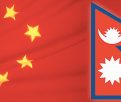 Commentaries
Impasse over BRI Projects in Nepal
Commentaries
Impasse over BRI Projects in Nepal
-
 CommentariesNews
Yet another Musical Chairs in Kathmandu
CommentariesNews
Yet another Musical Chairs in Kathmandu
-
 CommentariesTop Story
Spurt in Anti-India Activities in Canada
CommentariesTop Story
Spurt in Anti-India Activities in Canada
-
 NewsTop Story
Nepal: Political Stability Under Threat Again
NewsTop Story
Nepal: Political Stability Under Threat Again
-
 NewsTop Story
Accountability Tryst With 2024 Ballot….
NewsTop Story
Accountability Tryst With 2024 Ballot….
-
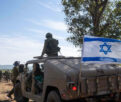 NewsTop Story
What Would “Total Victory” Mean in Gaza?
NewsTop Story
What Would “Total Victory” Mean in Gaza?
-
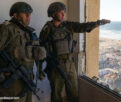 CommentariesTop Story
The Occupation of Territory in War
CommentariesTop Story
The Occupation of Territory in War
-
 CommentariesTop Story
Pakistan: Infighting in ruling elite intensifies following shock election result
CommentariesTop Story
Pakistan: Infighting in ruling elite intensifies following shock election result
-
 CommentariesTop Story
Proforma Polls in Pakistan Today
CommentariesTop Story
Proforma Polls in Pakistan Today
-
 CommentariesTop Story
Global South Dithering Away from BRI
CommentariesTop Story
Global South Dithering Away from BRI
-
AdSense code


